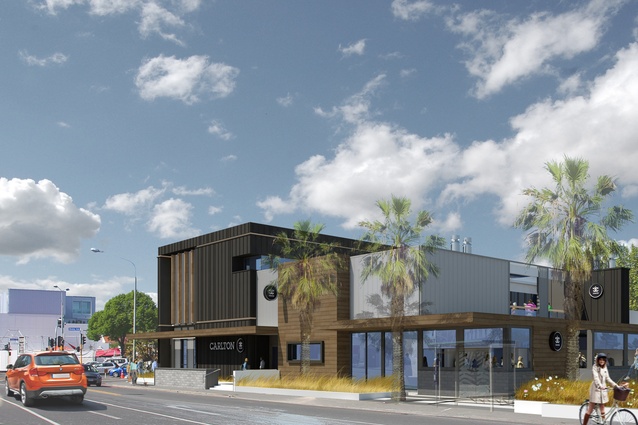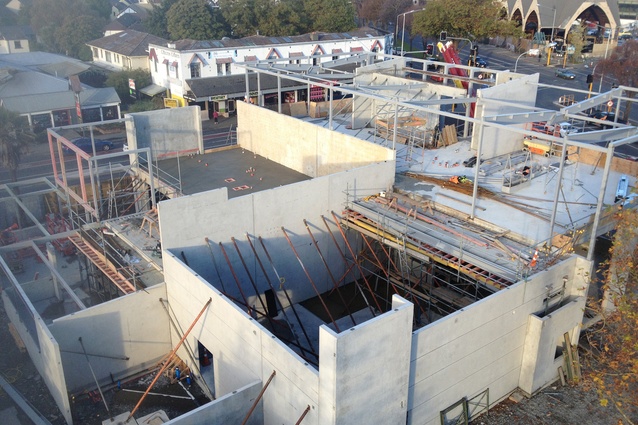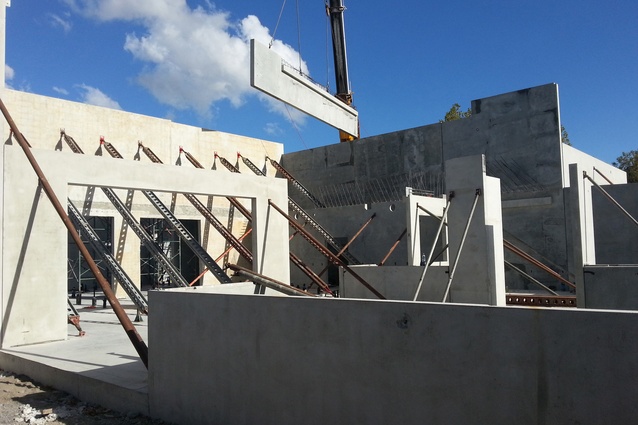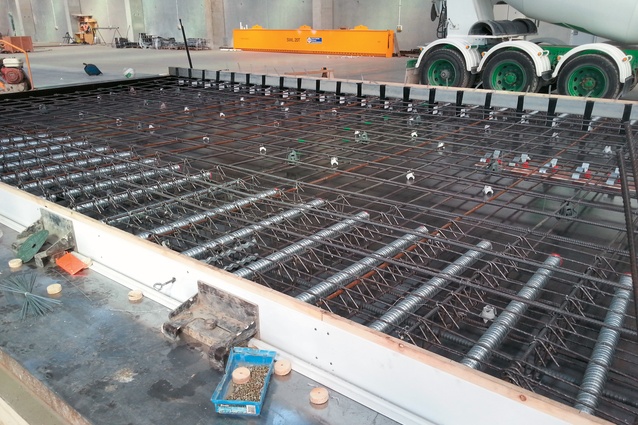A little, big building
The Carlton Hotel packs a lot of punch for its size, combining modern design with a heritage-inspired fit out.
The Carlton Hotel, an iconic Christchurch watering hole on the corner of Bealey Avenue and Papanui Road, will soon reopen its doors.
Following the initial earthquake in 2010 it was thought the heritage-listed building that housed the pub could be preserved, and Chris Prebble Architects were engaged to develop restorative concepts. But due to the aftershocks, the 1906 building - the second to house the Carlton Hotel on this site - was demolished.
Following the demolition, ‘Carlton Corner’ quickly had a new functioning pub; a temporary mobile venue consisting of a truck and trailer that grew to a 220m 2 facility, catering for up to 400 people, when fully assembled.
The new building on Carlton Corner is the result of a partnership between the owners of the property and Christchurch City Council, who together sought a new vision for the iconic site that reflected a modern design aesthetic as well as the need for seismic strength. Architect Dean Cowell said the design went through a review process with the Urban Design Panel due to the historical significance of the former building.
“The council didn’t want to see a fake Hollywood rendition of the old building,” he said. “Essentially it was about taking the essence of the old building in mass and then reducing it back to its raw forms. We chose to go in a modern direction. The new building occupies the large corner site and uses vertical cladding to mimic the vertical nature of the old building.”
Original concepts were developed over a period of months, but were adapted following the council review to better emulate the presence of the previous building. “They asked us to adjust our design, making it larger and more dominant,” Mr Cowell said. The first incarnation of the Carlton Hotel was a two-storey weatherboard building that was demolished in 1902 and replaced with an Italian palazzo-style building in 1906. The new building will house the revived Carlton Pub and Restaurant, a Burger King, along with office space.
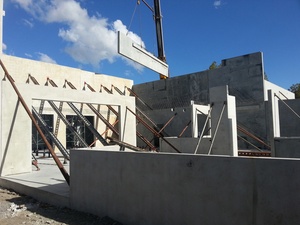
Cook Brothers Construction project manager Corey Bennett said while the exterior was modern, the interior of the pub would have strong references to the Carlton Hotel of old. To make the transition from exterior to interior, some exterior cladding materials will be used on interior walls. Six different materials will be used to clad the exterior including Parklex, Modulite, Alucobond, concrete, zinc and bricks.
Despite the relatively small scale of the project, the build has provided various challenges for the construction team. “It is not a big structure in terms of sqaure metres, but there is a lot of mass to it. It’s quite a gutsy wee building. There is a lot of concrete and steel. It’s the little big building,” Mr Bennett said. “If this was built three or four years ago, there would have been substantially less concrete and steel.”
The screw pile foundations are between 13 and 14 metres deep. On top of them are 600 x 1500mm concrete foundations. “It’s becoming more of a standard practice to use large foundations like these, especially in Christchurch.,” he said. The seismic features of the building and safety were a focus from day one. “All the exterior windows have a seismic frame, which allows movement in the event of an earthquake. The frame is 50mm deep, so once the window is installed there is quite a lot of room for movement.”
With up to 50 subcontractors on site at a time, as well as cranes ranging from 150 to 200 tonnes, planning was an imperative part of the build. “There was definitely a lot of planning in this process. It was not an easy structure to put up so it was about getting the sequencing right,” Mr Bennett said. The scale of some of the exterior panels also proved a challenge. “We had to cast two on site because they weighed 24 tonnes and the size of them made them difficult to cart. The cranes were reaching their limits moving some of the larger panels.”
And while the structure may appear to be a safe, entirely modern building, the interior will clearly echo days gone by. “The interior will contrast the exterior, which is obviously modern,” Mr Bennett said. “A lot of work went into creating an early 1900s-style bar. A glass ceiling panel was brought in from an old church in Germany, and the whole place will be decked out with historical artifacts.”
The pub will feature varying ceiling heights as well as three large fireplaces with 2.2-metre fireboxes. Construction started in March, and is due for completion in early September.

